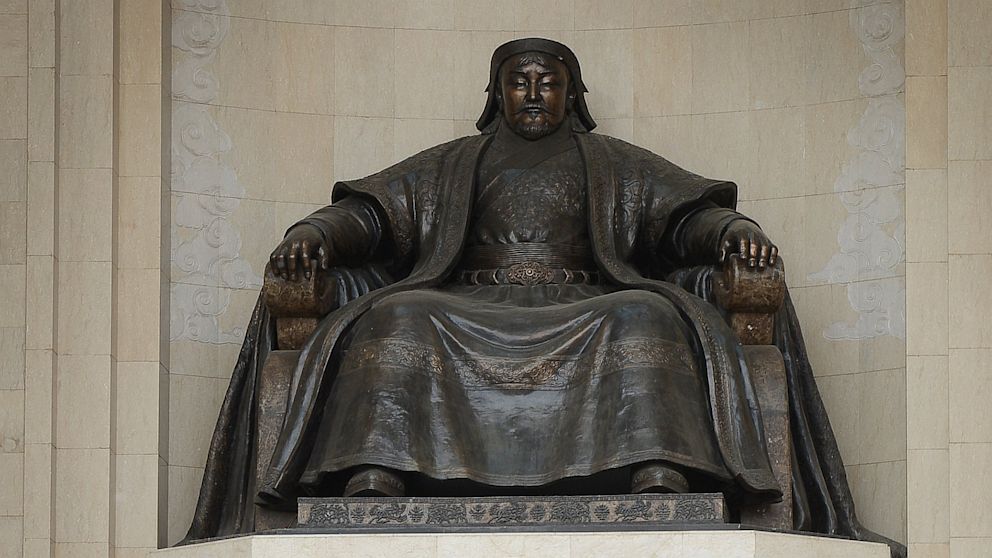Path of a Tyrant: Uncovering Genghis Khan's Lost Legacy
His end didn't begin heroically.

Sept. 7, 2013— -- As competing researchers race to locate Genghis Khan's tomb, discoveries by German and Mongolian archaeologists are shedding light on his son Ögödei's equally impressive accomplishments.
His end didn't begin heroically. The Mongolian ruler simply fell off his horse. His hands and legs must have lost their strength. It was an embarrassing incident from which Genghis Khan never recovered.
Shortly thereafter, a procession of slaves and warriors escorted the ruler's body, wrapped in a white felt blanket, to its final resting place. Slivers of fragrant sandalwood were placed in the grave to prevent insects from gnawing at the body of the Great Khan.
But where exactly did the subjects bury the body of this tyrant, who is still revered by Mongolians today? Over the past century, scores of adventurers and archaeologists have searched in vain for Genghis Khan's grave.
Today, expeditions with high-tech equipment are racing to make the find. Not surprisingly, Mongolians claim their national hero's grave is located within the borders of their own country. A Russian historian, though, claims to have discerned from old sources that the nomadic leader was buried near the Mongolian border -- but on the Russian side, in the Republic of Tuva.
Meanwhile, Chinese researchers have sent an expedition to the foothills of the Altai Mountains, with the assumption this is where Genghis Khan was buried after he died during his last military campaign against the Tangut, in modern-day northern China.
Can Technology Find Genghis Khan?
The surly old Mongolian would have probably found pleasure in knowing that, nearly 800 years after his death, hordes of archaeologists are still wandering the steppes and deserts in search of his final remains. And it's certainly no coincidence that the search has proven so difficult.
According to one legend, Genghis Khan's underlings were given strict orders to eliminate all evidence that could lead to the spot where the ruler was rather humbly laid to rest. His loyal followers allegedly planted a grove of trees over his tomb, then Mongolian soldiers slaughtered the slaves who had dug the grave. After they returned home, these warriors were subsequently massacred by their own military comrades so no one could divulge even the slightest clue.
The most recent attempt to track down the Mongolian's tomb has been launched by 30-year-old Albert Lin from the University of California, San Diego. Pictures show the young, American scholar galloping on horseback across the magnificent Mongolian grasslands and posing in his adventure garb.
But despite what these images suggest, Lin isn't planning on using a pickax and a spade to dig up the earthly remains of the fabled Mongolian. The researcher is using radar and high-resolution satellite imagery to comb through the area around the holy mountain of Burkhan Khaldun, in the Khentii range in northern Mongolia -- where he believes Genghis Khan's grave is located.
The use of such high-tech equipment in the field is a novelty for technophile researchers. But in this case, veteran archaeologists doubt modern gadgetry will lead to the desired results.
"I can't imagine how this could produce convincing proof. Simply finding a large burial complex in the Khentii region doesn't mean this is actually Genghis Khan's grave," says Hans-Georg Hüttel, who has been directing one of the most prominent excavation projects in Mongolia for many years.




